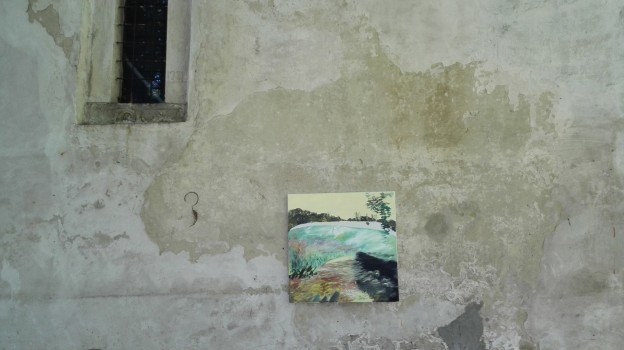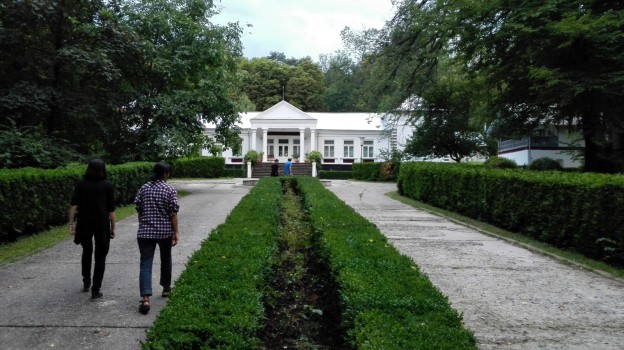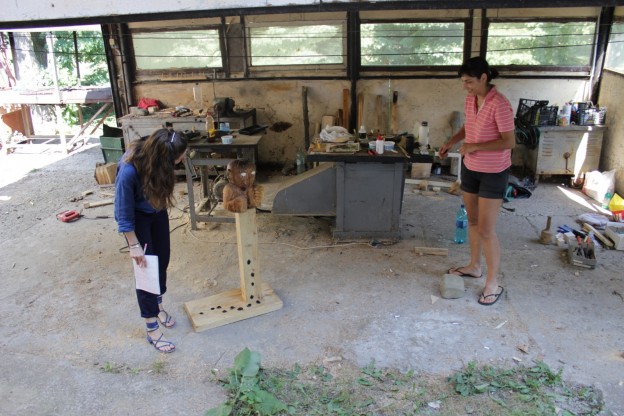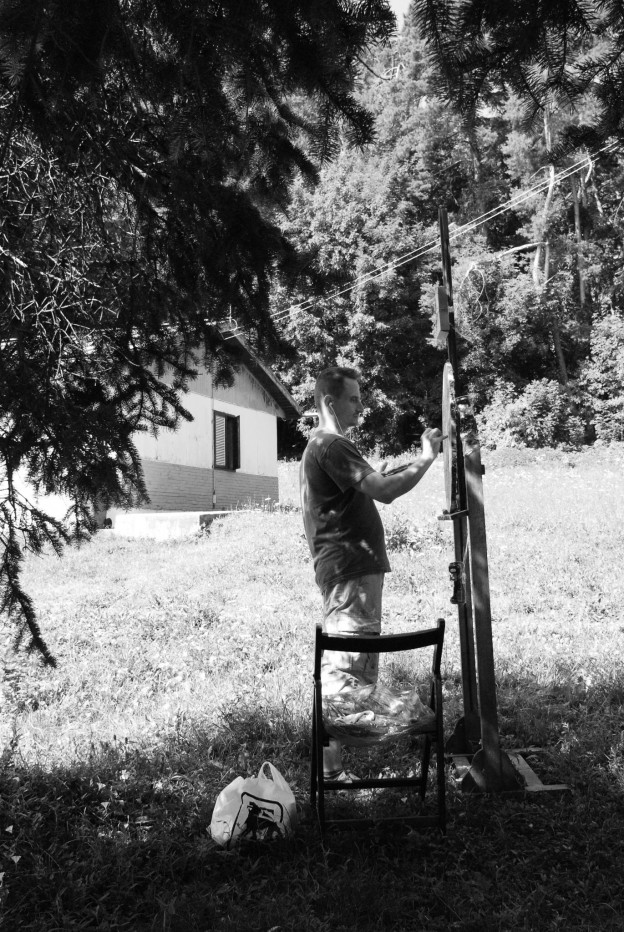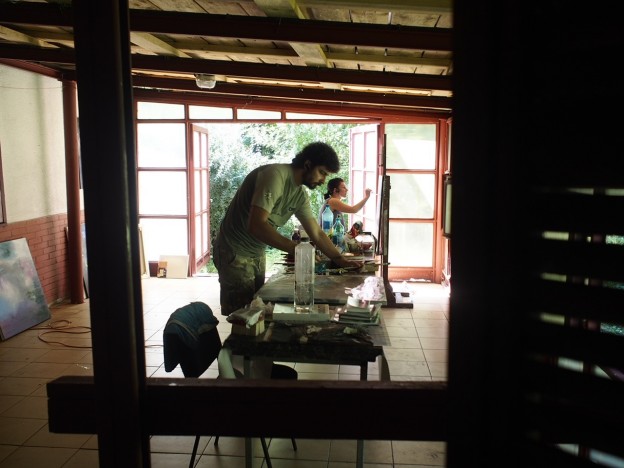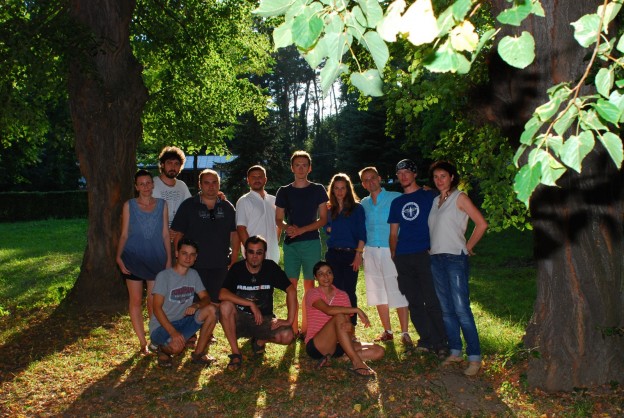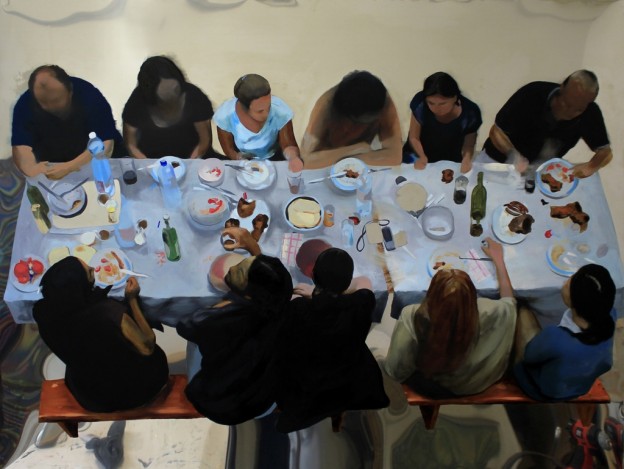Secret art places: Part I
The exhibition Nouvelles histoires de fantômes, prepared by Georges Didi-Huberman and Arno Gisinger and presented this year in the Palais de Tokyo, discussed the after-life of images, trying to explain how the visuality of the present is being formed after a century of art that had been politicized since WWI, and how our artistic memory is shaped by this panoply of visual information.
Aby Warburg’s Mnemosyne Atlas stood at the core of this major installation of images and archive material, first displayed at Museo Centro de Arte Reina Sofía in 2010. The beautiful publication produced for the occasion inspired me for a while in my writings and thinking about art, as it was articulate, coherent and had “a soul”. In the exhibition, apart from the strong imagery, like Harun Farocki’s videos, one could see Paul Klee’s herbarium, with his related writings and graphics, or Sol LeWitt’s photo collages.
It was exactly this relationship between contemporary visuality – the private life of an artwork operating like the mechanisms of the human condition – that has led me to explore several art-camps in Romania (tabara artistica in Romanian) this summer, with the purpose of tracking the different conditions of the artistic discourse, that are not always visible due to the accelerated rhythm of the art system. And I would like to talk about two of them: one in Tescani, a small village in the Eastern part of Romania and one in Cetate, another small village in the Southern part of the country, near the Danube. What is interesting about art-camps is that they have a structure different from that of a residency – they do have an organization behind them, but it is not that visible and it usually depends on a handful of dedicated people that make things work. In an art-camp, it is normal to have the same group of artists that meet there each year, spending from two to four weeks together, creating a connection between each other and a continuity that shapes the specific identity of the location. Even though they have interests in various media, the artists tend to explore the possibilities of traditional materials and practices, trying to stay away from the computer. The awe-inspiring landscape brings inspiration and character to the artistic process, and also a real environment for thinking and debate.
The art-camp in Tescani is housed in the mansion of an old Romanian noble family, Rosetti-Tescanu. Built at the end of the 19th century, in a pure classical style, the building is flooded by light and surrounded by a dendrologic park. The observer can easily distinguish here layers of history, stories and expectations. After the heir of the family, Maruca, married the renowned Romanian composer George Enescu, the house became the drawing-room of Enescu. In 1947, the year communism was established in Romania, the mansion was donated by the family to the Romanian state and became a cultural centre. In the 1980s it became a memorial house dedicated to the Rosetti-Enescu family.
Colonia 21 is an artistic group that was formed in 2003 around another art-camp, through the initiative of Romanian painter Teodor Moraru, and supported by The Concerts Society Bistrita. Since 2008, Colonia 21 has been convening each summer in Tescani. Apart from the main group, each year there are several invited artists, together with the recipient of the Teodor Moraru Scholarship. During my stay, there were eleven Romanian artists working in Tescani: Dan Badea, Dragos Badita, Dragos Burlacu, Claudiu Ciobanu, Marius Craita Mandra, Anca Irinciuc, Cristina Nedelea, Maria Pop Timaru, Justinian Scarlatescu, Alex Tomazatos and Zoltan Béla.
Under a pavilion, hidden behind the mansion, one would discover Zoltan Bela, Anca Irinciunc, Justinian Scarlatescu and Cristina Nedelea working on several canvases at the same time.
I have been familiar with Zoltan Bela’s practice for several years, and this July, I met him at a moment when he wanted to change his style of painting radically. Focused on the process and on the daily experience, Bela was taking notes and observing the small details of the space, staying away from photography, while positioning himself closer to nature.
In her paintings, Anca Irinciunc was combining elements she kept seeing in her walks around Tescani, like the same horse, or a plate with the message “House for Sale”, with the way light was falling on the pavilion and on the grass in certain moments of the day. Hybrid pictures, sometimes visually uncomfortable, were resulting from decomposing the real images.
Working with a large collection of original photographs that he collected from flea markets in Bucharest, Justinian Scarlatescu was transferring the images onto canvas and intervening in them, often using rudimentary equipment and expired films, without controlling the result. His purpose was to address memory and to break the chain of reproducing visual information.
Cristina Nedelea mentioned that the artists in Tescani form a nucleus, with a specific interest in landscape, drawing and the figurative. Selections of art movies and the stereotypical imagery used lucidly by film directors to express certain states of mind represented an important part of the documentary material and a basis for their discussions.
Marius Craita Mandra analyzed through his paintings the relation between the rhythm of everyday life and the standardization of the daily through the use of computers. His human models resembled cases that had been emptied of their private contents, and re-filled with information that didn’t belong to them.
Dragos Badita, the recipient of this year’s Teodor Moraru Scholarship, used his observations of the surroundings and of the people working the fields to draw with Indian ink on paper flamboyant landscapes communicating the intensity of the wind through the trees and the valleys.
A good dose of humor, mythology and contemporary living are coordinates that Maria Pop Timaru combined in her drawings and objects. The comments she was making on paper, in the form of writing or futurist drawings, would be later transformed into wooden objects that talked about childhood memories and disruptive political situations.
Dragos Burlacu was tracing the spaces of experiment, that for instance included eating together with all the artists at the same table, and introducing the presence of an invisible character or a fictitious situation that would bring criticality in the form of humorous postures or comments. I mention here the painting displaying the aerial view of a friendly dinner among artists, as if God was the beholder, but in the same time the part-taker to a conspiracy.
Studying the various eating habits of people was also one of Dan Badea’s preoccupations. Concerned with how space in general generally evolved around him – at the private, as well as the professional level – Dan Badea filled the role of commentator for the group, often using moments in the past to justify a present day situation.
After approaching local topics in his paintings, Claudiu Ciobanu chose to work on an idea he had developed before coming to Tescani. Because the mansion has many places where the guests can sleep or hide, and was meant to shelter creative minds since the beginning of the 20th century, Claudiu commented in his works upon different stances of sleep or of covering someone’s identity.
Active as a biologist specialising in the discovery of viruses, Alex Tomazatos transformed his photographic camera into a strong and pragmatic eye documenting reality (but not necessarily the truth) about a situation. Exploring areas around Tescani that were hard to access, the photographer preferred to see what was hiding underneath the bed, or in the depth of the forest, or in the ditches on the sides of the road, a method of research that resembled his study of viruses.
In my opinion, these spaces of synthesis, where several worlds collide, define a fourth temporal dimension, a transversal and innocent time, untouched by expectation or alterity.
To be continued…
